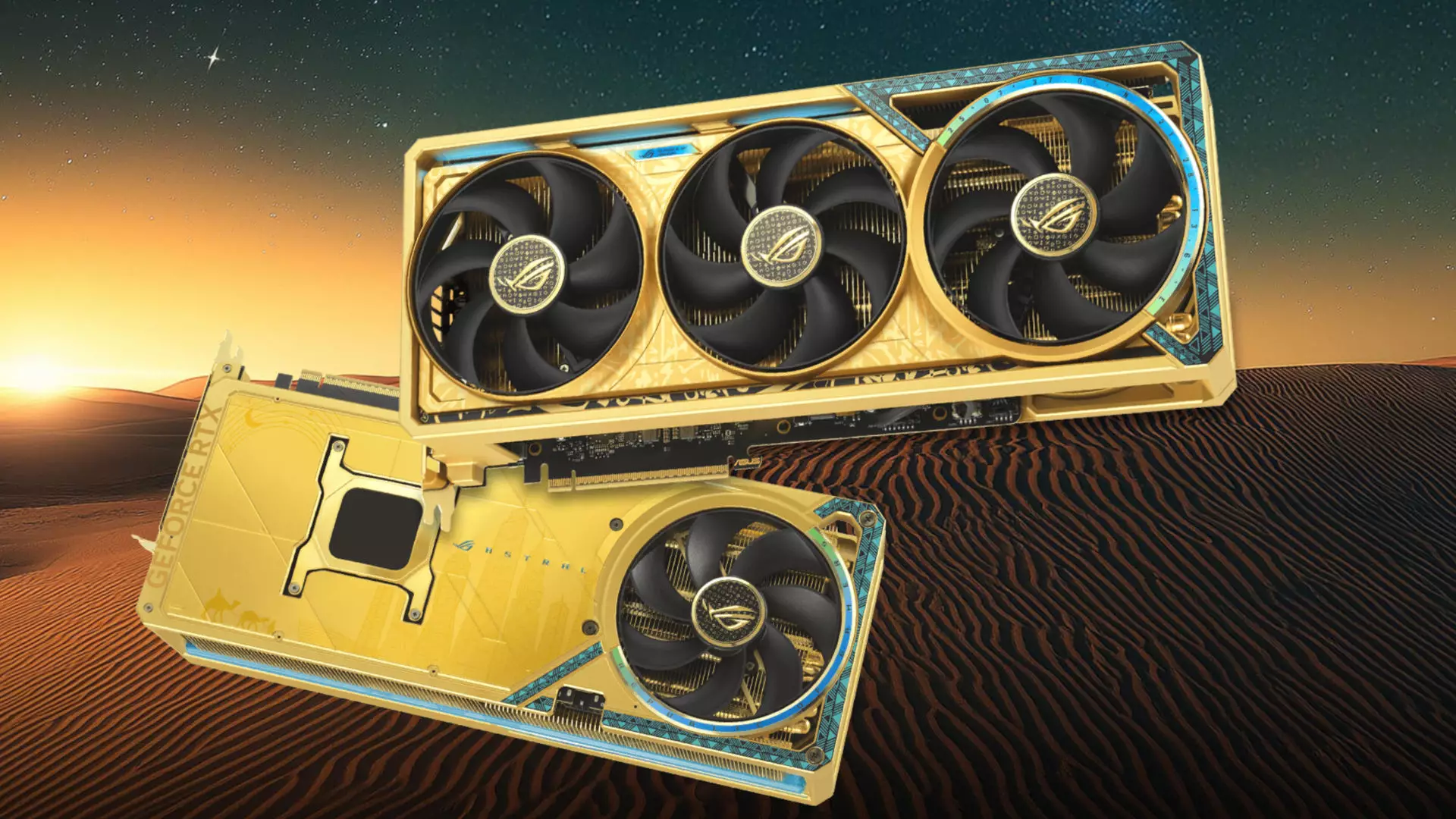In the hierarchy of high-performance gaming hardware, there’s luxury, and then there’s the Asus ROG Astral GeForce RTX 5090 Dhahab OC Edition. This graphics card has sparked conversations, shock, and, frankly, disbelief in the gaming community with its staggering $7,000 price tag. While it is well-known that graphics cards have been riding a wave of exorbitance for more than a decade, Asus seems to have taken it to an entirely new level. The Nvidia GeForce RTX 5090 might have a painful MSRP of $1,999, but the Dhahab model is a clear example of how premium branding and product exclusivity can redefine value in the tech market.
To fathom why Asus would set the price so high for a gaming peripheral primarily meant for enthusiasts and competitive gamers, it’s crucial to peel back the layers of what makes this card tick—or, should I say, shimmer. It is not just a product but a statement piece, making it a coveted trophy for those who can afford it, despite its impracticality for everyday use.
A Delve into Specifications and Features
The Asus ROG Astral Dhahab RTX 5090 offers a handful of advanced features that just might justify the fiscal leap—at least superficially. First up is the impressive base overclock. Compared to the Founders Edition’s boost clock of 2,407 MHz, the Dhahab boasts a substantial increase to 2,580 MHz, with the ability to skyrocket to an eye-popping 2,680 MHz in overclock mode. While these clock speeds signal a notable improvement in potential gaming performance, one must question whether such performance increases translate into significant real-world outcomes for gamers, especially at competitive levels.
The design element is where this beast truly shines—quite literally. The gold-plated cooler shroud and backplate consisting of a solid 6.5 grams of actual gold leave no room for subtlety. For the wealthy buyer, the mere aesthetic pleasure of owning something so ostentatious might hold more appeal than the card’s under-the-hood capabilities. However, this raises a vital question; are we entering an era where the glimmer of a card eclipses its performance metrics?
About Exclusivity and Market Fit
Asus has cleverly positioned the Dhahab in selective global markets, primarily targeting affluent regions in the Middle East. Consumers in these areas have historically exhibited a preference for luxury goods, making the Dhahab a logical fit within that cultural context. By limiting availability, Asus effectively creates a status symbol, making the product not just a gaming tool but a collectible—one that might even be left in its box as a conversation starter.
It’s easy to argue that Asus could have set the price even higher without encountering substantial buyer resistance. For established consumers of luxury goods, the cost of a product often lies in its exclusivity, the prestige of ownership rather than mere utility. Thus, for the high-rolling gamer, spending our playful estimates of $10,000 for something that blends technology with more traditional luxury markers might seem like a sound investment.
The Question of Practicality
But let’s set aside the allure and the bling factor: Is the Dhahab OC Edition truly worth the investment? For everyday gamers, the capabilities offered at its price point could be better utilized in crafting a complete gaming setup. With $7,000, one could easily purchase a top-tier gaming PC paired with high-end peripherals—a brilliant 4K monitor, mechanical keyboards, premium audio gear, and enjoy a gaming experience that the Dhahab alone cannot deliver.
The truth of the matter is that while Asus stretches the boundaries of pricing strategy, the Dhahab’s primary function might ultimately be to sit at the apex of a gamer’s trophy wall, rather than to push the boundaries of performance.
In a world where effective performance often outweighs flashiness, the landscape of luxury gaming hardware might soon need recalibration. As we look toward the future of gaming, we must ponder whether the market will continue rewarding such cases of ostentatious spending or pivot towards more meaningful investments focused on technology and performance, rather than surface-level glimmer.

